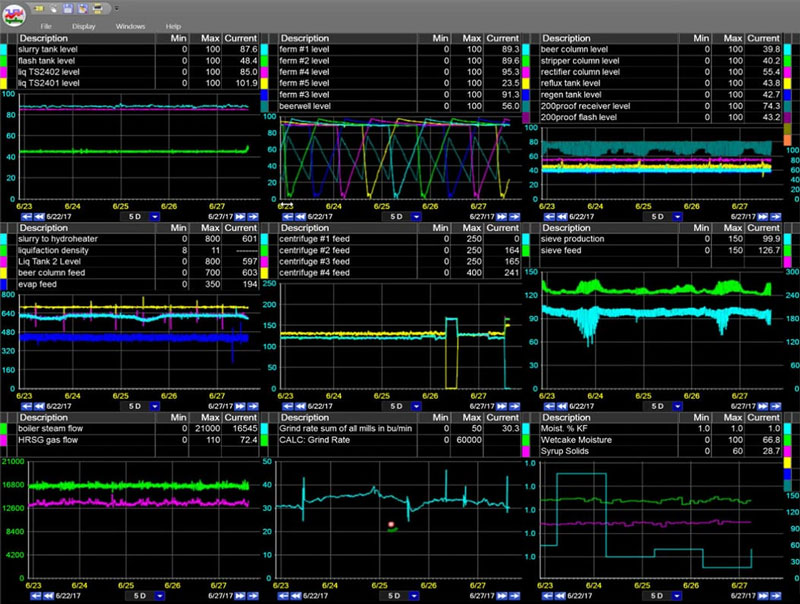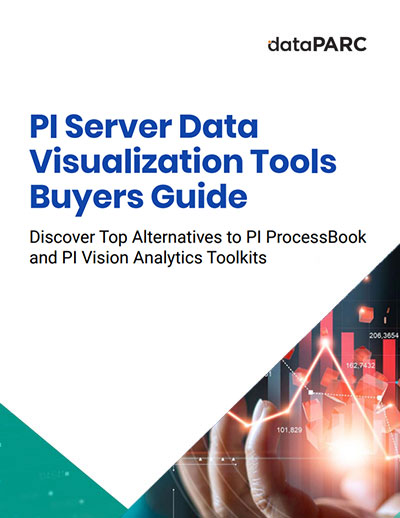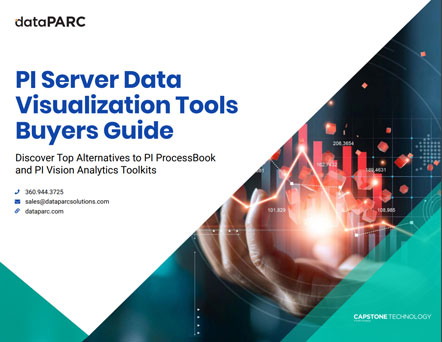This blog compares on-premises and cloud data historians. It examines the benefits and drawbacks of each approach, their impact on scalability, cost, and security, and provides key considerations for companies choosing between them.
Introduction
As manufacturing companies increasingly move towards digitalization, the need to capture, store and analyze data from various sources has become paramount. This has led to increased development of data historians, and companies having to choose between cloud and on-premises data historians.
Industrial companies have traditionally relied on on-premises data historians, while cloud data historians, are relatively new to the market. For the purpose of this discussion, we are going to define cloud data historians as SAAS companies that are vendor hosted.
On-premises data historians offer control and ownership of data, security and improved reliability & performance for on-prem needs. However, they can require significant IT support and have limited scalability across an enterprise.
On the other hand, cloud-based historians were designed with the cloud in mind. They were born out of a need to store and utilize time-series data remotely. While they are flexible, the overall cost of ownership can quickly surpass its on-premises counterpart.
Both on-premises and cloud data historians have their pros and cons, lets take a deeper look into them. For other important historian attributes, check out What to look for in a Data historian.
Benefits and Drawbacks: Cloud and On-Premises Data Historians
Cloud Historian Benefits:
Cloud historians are newer and address limitations from older, on-premises historians.
Smaller upfront investment: Cloud-based historians typically require minimal upfront investment. There is no need to purchase and maintain hardware and infrastructure.
Easy to scale: With cloud-based historians, scaling is often as simple as adding more resources to the cloud environment. This makes it easy to expand as data needs grow.
Management: Cloud-based historians often have built-in management tools that make it easy to monitor and manage the data and infrastructure.
Easy integration to multiple sites: Cloud-based historians enable easy access to data from multiple sites. Making it easier for external applications to interface with the data.
Independent of highly proprietary automation vendors: Cloud-based historians are often vendor-agnostic. They can be used with a variety of automation vendors and systems.
Vendor Ecosystem: Some providers also have 3rd party applications easily available to integrate with the cloud Historian.
On-Premises Historian Benefits
On-premises historians offer several benefits that are not available with cloud-based solutions, making them ideal for certain use cases.
Control and Ownership: With an on-premises historian, the organization has full control over their data, ensuring complete ownership and autonomy. The data is stored on the organization’s own hardware, enabling them to monitor and manage it as per their needs and requirements. This becomes especially important when customer have specific compliance requirements like ITAR, IEC62443
Security: On-premises historians provide an added layer of security as the data resides behind the organization’s own firewall. This helps reduce the risk of cyber threats, data breaches, and unauthorized access.
Lower Total Cost of Ownership: On-premises historians require a lower total cost of ownership as compared to cloud-based solutions. The organization only has to bear the cost of hardware, software, and maintenance, without any recurring costs of cloud subscriptions. Additionally, it eliminates the need for a high-speed internet connection and reduces the dependency on cloud service providers.
Cloud Historian Drawbacks
Despite the benefits of cloud historians, there are still challenges to moving workloads to the cloud.
High Total Cost of Ownership: While cloud historians offer a smaller upfront investment, the overall cost of ownership can be much higher over time. This is because cloud historians typically charge for data storage and transfer. These costs can quickly add up, especially for large-scale operations. One resource found their total cost of ownership over 5 years was orders of magnitude higher when compared to the on-premises option.

Cloud and On-Premises Historians will have different total cost of ownership
Dependence on the Internet: Cloud historians rely on an internet connection to transfer and store data. This can cause issues if the connection is lost or slow. This can result in delays and lost data, which can impact production and cause downtime.
Potential Security Risks: While cloud historians offer high levels of security, there is always a risk of data breaches and cyberattacks. This is because cloud historians store data on third-party servers, which are vulnerable to hacking and other security threats.
Limited Control over Data: Cloud historians may offer limited control over data. This can be problematic for companies that need to closely manage and monitor their data. This is because cloud historians may have restrictions on how data can be accessed and used. Limiting the flexibility and agility of the operation.
On-Premises Historian Drawbacks
While on-premises historians have their benefits, they also come with some drawbacks that companies should consider before deciding.
Limited Scalability: On-premises historians can be difficult to scale up as the amount of data generated by industrial processes increases, resulting in additional hardware and maintenance costs.
High Upfront Investment: On-premises historians require a significant upfront investment in hardware, software, and IT infrastructure, which can be a major barrier for small and medium-sized manufacturers.
Limited Flexibility: On-premises historians are typically designed for specific use cases and may not easily adapt to new or changing requirements.
Proprietary Nature: Many on-premises historians are highly proprietary in nature, which can limit integration with other systems and third-party applications. This can make it difficult to build a modern, connected manufacturing operation.
dataPARC’s Solution
dataPARC is a software solution that aims to bridge the gap between on-premises and cloud-based data historians. With over 40 years of experience in solving on-premises needs, dataPARC has built capabilities to expand use cases beyond on-premises and provide enterprise-scale solutions.

Enterprise-scale solutions are important, see how other historians compare.
One of the key features of dataPARC is its open connectivity. This allows for easy connectivity to cloud services to send the right data for the desired use case and retrieve the data when needed. Resolving the issue of limited flexibility that other on-premises solutions have.
This vendor-neutral approach means that dataPARC is not tied to any major automation vendor or cloud services provider. This provides flexibility for companies to choose the best options for their needs. For needs best suited on-prem, the dataPARC historian is a great solution. For needs best suited in the Cloud, dataPARC can send data to the Cloud service of choice.
The dataPARC Historian is highly scalable, its architecture can accommodate small operations as well as multi-location enterprises. Additional data sources and storage capacity can be incorporated seamlessly.
With dataPARC, integrators and companies can have the best of both worlds and leverage their existing on-premises investments while taking advantage of the benefits of cloud computing.
Takeaways from Cloud and On-Premises Data Historians
In conclusion, the decision to choose between cloud and on-premises data historians depends on various factors, such as the size of the manufacturing operation, the level of control and ownership desired, and the cost and scalability considerations.
While cloud historians offer flexibility, easy scalability, and a lower upfront investment, they also come with higher total cost of ownership, limited control over data, and potential security risks.
On-premises historians provide more control and ownership of data, low latency, and lower total cost of ownership. However, they require IT support, and often have proprietary technology.
In this context, dataPARC provides the best of both worlds, offering over 40 years of experience in solving on-premises needs while building capabilities to expand use cases beyond on-premises.
Its enterprise-scale, open connectivity, and vendor-neutral approach provide an optimal solution for integrators and companies seeking a flexible, scalable, and cost-effective data historian solution.
Ultimately, the choice of data historian solution should be based on the specific needs and goals of the manufacturing operation, and a careful evaluation of the pros and cons of each approach can help make an informed decision.










